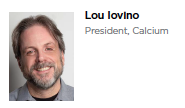Today, pharmaceuticals, biotech products, and other treatments are part of a broader approach to healthcare that encompasses preventative tools, wellness, and patient or consumer preference.
The pharmaceutical industry no longer exists in a silo. How companies build their brands and brand awareness must account for shifting dynamics with the creation of a new lexicon — one that positions the patient at the center.
This shift to a patient-centric lexicon with brand building is perhaps most keenly felt with the rise of specialist and rare disease products. As McKinsey noted in its report — How to successfully launch a rare disease drug in a patient-centric world — often when a large company introduces a new therapeutic for a rare disease that it has acquired from a smaller biotech, that company will be new to that field. As a result, the brand team will have few experiences to work from and, if the treatment is in late stage development, little time to prepare a brand strategy. While companies need to adopt a more personal, disease and community aware and health-centric approach to building brand awareness, experts say they must also not lose sight of what defines the company. That includes long-term efforts to build credibility and trust with its brands.
Audience Awareness
Where in the past the primary audience for brand building was the prescriber or healthcare practitioner, today the brand needs to resonate with a much wider audience. One audience that must be considered is the payer since their perspective will be vital to getting reimbursement. The days of market access depending entirely on demonstrating the safety and efficacy of a drug are over. Now payers expect a lot more, such as cost-effectiveness.
To this end, companies must ensure that market access planning is woven into building brand awareness. This requires demonstrating the health and economic value of a drug as part of any campaign. And that requires bringing key stakeholders such as medical affairs into the discussion about brand building early on and having them continue to play an integral role throughout the lifecycle of a product. For example, Biogen set a plan in place to ensure medical affairs was involved in looking to improve the treatment for spinal muscular atrophy, Spinraza, as soon as it reached the market.
The patient needs to be at the center of any brand-building initiative, starting with understanding their needs and concerns. In rare diseases, the issues patients face include getting the right diagnosis — which on average takes between five and seven years — and then getting the right treatment for their illness. The messages conveyed about a treatment for rare diseases need to be on point and relevant. Companies must include patient advocacy groups in their launch and brand building, and think carefully about how they will position their therapy.
Companies also need to attract key opinion leaders, especially for conditions with small numbers of patients, as is the case with rare diseases. Brands for these conditions need to win strong brand advocates early on. As experts have said, you only get one shot at getting the messaging right.
Clear Messages
Business leaders say brand building and messaging to key audiences requires simplicity in communication, getting the message across quickly and effectively across all communication channels: sales forces, medical affairs, communications and marketing, and development.
The vision and brand positioning must be clear and consistent. The positioning statement needs to be clear to the audience, both internal and external. Equally, though, companies need to know their customer and what will resonate with them. The brand messaging needs to reach the patient/consumer at both an intellectual level — explaining how the treatment can help their condition — as well as an emotional one.
Leaders in the rare disease space have adopted a raft of tools to reach patients with effective brand messaging. But to start with, they offer unbranded educational content, such as videos and dietary advice where relevant, as well as patient testimonials, research studies on the impact a disease has on patients’ lives, and other programs. These initiatives are most effective when they bring together a broad range of stakeholders, including specialists, other wellness professionals such as dietitians, patient advocacy groups, and caregivers.
Channels used to reach patients with brand messaging are also crucial — from social media, email, to working alongside advocacy groups and patients at a more personal level. As experts have noted, companies need to think creatively about how they will get their brand messages in front of their audiences. This might include regular blogging from trusted sources and improved wireless connection.
Building a strong and trusted relationship with patients is a must. To strengthen the brand, healthcare marketers need to understand what motivates and inspires patients and ensure messages are aligned with patients’ objectives.
As with any brand, customer satisfaction is crucial for brand building with pharmaceuticals. While the product’s effectiveness is the top priority, how companies communicate with patients, including helping them in their wellness journey, has become increasingly important in building brand loyalty.
Brand-Building Tools
As patients become more aware and eager to take control of their healthcare journey, marketers can also tap into tools to harness their brand strategy. Among the tools and techniques marketers need to consider today are:
Persona development, which offers patient archetypes so marketers can learn more about what motivates patients and why they may — or may not — engage with the brand. Patients with serious rare diseases are particularly inspired to share information with pharma companies to improve their quality of life.
Social media monitoring, including responding to comments on product pages.
Patient journey mapping, which can give marketers insight into providing the right content to patients at the right time.
Testing sentiment — it’s one thing to create a brand strategy, but you also need to test how it resonates with the audience and whether the message is understood by patients.(PV)
~~~~~~~~~~~~~~~~~~~~~~~~~
Executive viewpoints
 Susan Abedi
Susan Abedi
Executive VP, Commercial Solutions, 81qd
The Patient-Centered Movement
Patient-centric is moving to patient-centered. One of the most significant developments in patient-centered support is the provision of transportation services for patients undergoing infusion. Patients have agonized for too long over the impact of taking time off to go to the doctor, of asking family members to take them, or of paying for transportation on their finances. This challenge is often missed on typical patient journey assessments. Patient-centered brand teams are aware of the journeys that patients face and are working holistically to provide support. They are broadly integrating national-level anonymized patient data and machine-learning algorithms with in-depth discussions with patients and providers to understand the multiple types of clinical journeys. Effective brand teams realize that there are different types of clinical journeys and that success will be driven by meeting patients along the way.
Leveraging Data Across the Board
The more things change, the more they stay the same. Success will continue to be driven by focus and strong execution. However, customer approach will shift as the U.S. healthcare system continues to evolve and consolidate. Brand-building initiatives will focus more on the institution, practice, and payer vs. the individual physician. It will become even more critical to profile and segment practices and accounts with the rigor that was applied to HCPs. Patients will continue to be at the center of all brand-building initiatives, and the most successful brand teams will determine how to effectively leverage artificial intelligence- and machine learning–driven approaches to engage with patients appropriately and constructively. Yes, we will know more about patient preferences and clinical journeys; we will know when a patient is likely to progress, what undiagnosed diseases are lurking, and how a patient prefers to consume information — but how brand teams leverage this information to support, not just engage, patients will differentiate brands.
 Joe Daley
Joe Daley
President,
Addison Whitney, a Syneos Health company
Value of Commercial Insights
The most effective brand strategy in today’s patient-centric environment is to engage early. We can’t stress enough the value of commercial insights in clinical development. Knowing how an asset is going to operate and interact within real-world settings opens the door to creating early and lasting relationships with key stakeholders, including patients. Constructing the brand language around the science, personality traits/tone and pulling this into clinical trial branding and asset nomenclature results in a purposeful and consistent experience, and is the origin of patient-centricity.
Defining the Brand Purpose
Brands of the future will embody a clearly defined brand purpose, and shared brand behaviors. Brand building initiatives will always need to yield the same outputs: awareness and loyalty. But as brands evolve so will our expectations, and to be successful brands need to be firmly grounded in their purpose. There will be little time for brands that are obscure, hard to understand, superficial, or pandering. That’s the power of our industry; universally our purpose is noble.
 Lou Iovino
Lou Iovino
President, Calcium
Brands as Part of the Patient Story
If you believe that marketing is storytelling, then specialty or rare disease products very easily fit into a patient’s story. For instance, “Mary has a rare form of cancer and wants to thrive; specialty product X helps her do that." Rather than focus on features and benefits, brands in competitive markets should work harder at being a part of their patients’ stories.
Empowering Patients
For years, brands focused on providing patients with information and not on what they should do with the information. Now that disease and health information is so abundant, brands have to focus on empowering patients and not simply educating them. Brands that can help patients have better conversations with their doctors will earn loyalty and differentiate themselves in today’s patient-centric environment.
 Brandie Linfante
Brandie Linfante
Senior VP, Engagement Strategy, Ogilvy Health
Brand-Building Initiatives of the Future
Brand-building initiatives of the future will likely use AI and technology integration to provide valuable insights specific to the targets, be patient-centric, and respond to healthcare professionals’ unmet needs. Branded campaigns won’t be shortsighted, lending themselves to equal parts data and human empathy. Brand experiences will be transformative, and content strategy will be aligned to successfully attain a brand’s long-term growth initiatives.
 Johanna Skilling
Johanna Skilling
Head of Planning, North America,
Ogilvy Health
Actions Speak Louder Than Words
Consumers welcome brands that help to improve their lives. But actions speak louder than words. Does your brand treat cancer? Your brand could be the one that goes the extra mile to support patients with needs like meal delivery, child care, and transportation to treatment. Does your brand help people with multiple sclerosis? It might be the brand that advocates and creates better options for people who struggle to be ambulatory. Marketers need to make brave choices that respect patients’ reality. And then make it real, in actions as well as words.

















